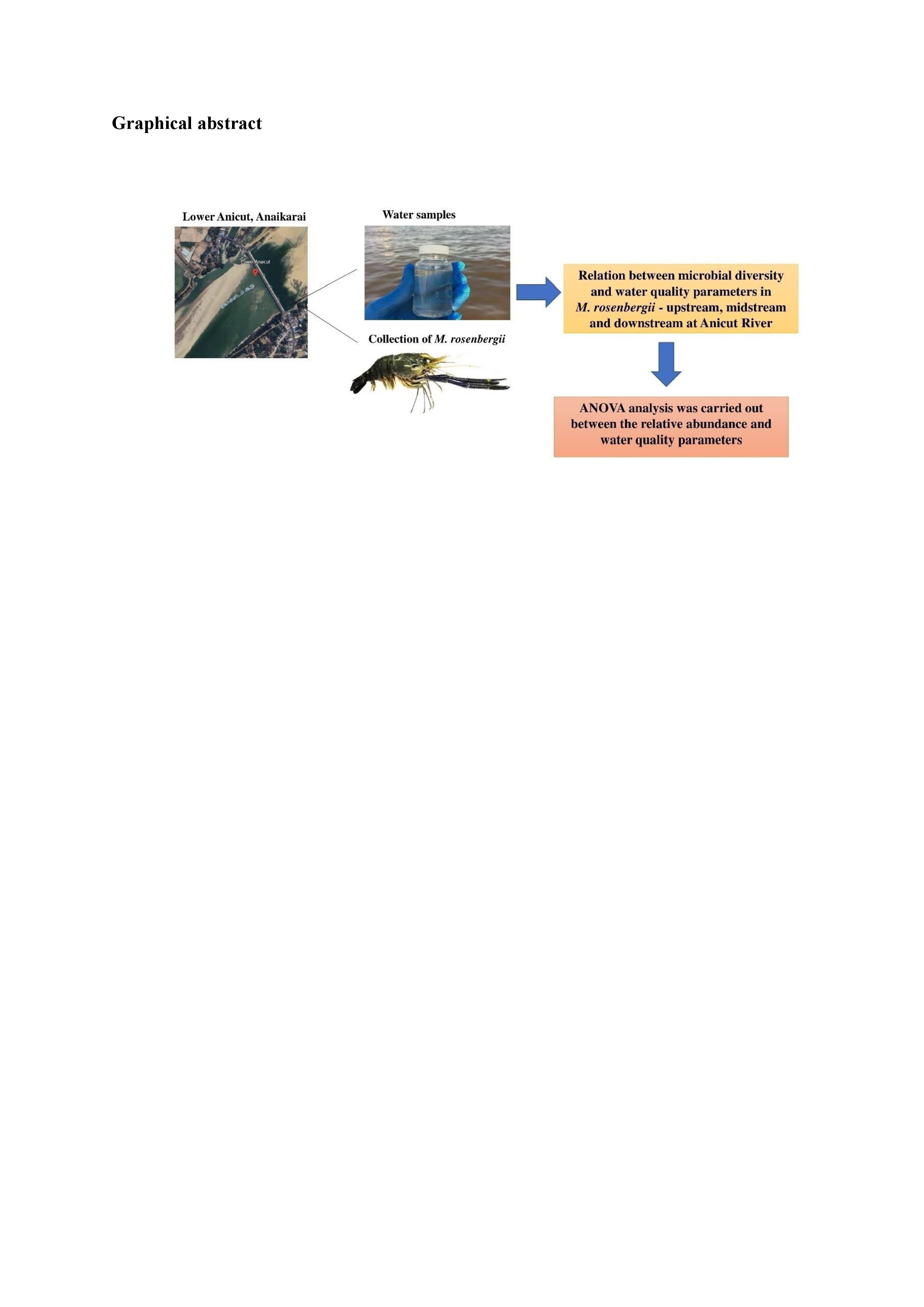
This study examines the microbial diversity and environmental gradients of aquatic habitats from upstream, midstream, and downstream locations near the anicut. Using relative abundance and diversity indices, these investigations revealed a decrease in downstream aquifer microbial diversity, with Vibrio (Proteobacteria) becoming more frequent. Anthropogenic activities and natural processes are reflected in the significant geographical variability (p < 0.05) of environmental parameters as pH, DO, salinity, and nutrient levels (ammonia, nitrate, and phosphate). In the downstream regions, nutrient enrichment is high and DO is low, which could suggest that aquatic ecosystems may be disrupted by eutrophication. The dominance of the Vibrio genus in certain pathogenic individuals suggests poor water quality and compromised ecological integrity. These findings highlight the connection of microbial communities and environmental conditions, underscoring the significance of sustainable management approaches. Restoring riparian habitat, managing nitrogen loads, and conducting frequent monitoring are some suggestions to lessen ecological difficulties.This study thereby integrates environmental analysis and microbial profiling as an important discovery for ecosystem dynamics, which therefore stresses the urgent need for well-targeted intervention measures to prevent the loss of biodiversity and disruption of ecological equilibrium in river systems.
Total file downloads: 14